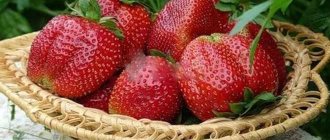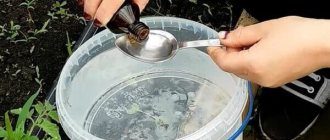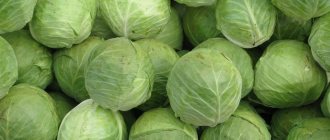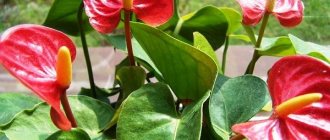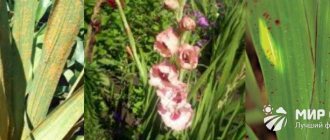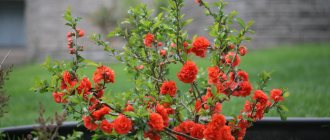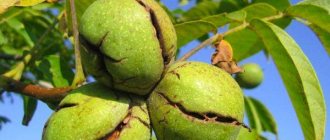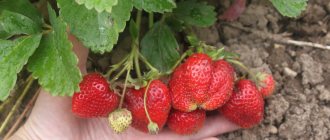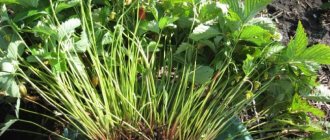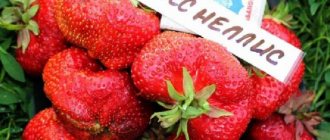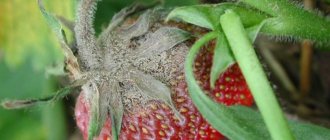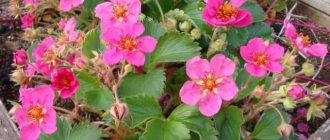Description of the variety
Strawberry Clery is a strong, powerful, medium-leafed bush. Everything about it is beautiful: huge shiny leaves of rich green color, snow-white flowers and large rounded-elongated berries with a blunt tip. The inflorescences are located at the level of the leaves. The educational ability is high. The fruits are even, medium in size, although the first berries are large: 40-50 g. Throughout the entire fruiting period, the berries remain of the optimal size and shape for sale. The yield of the variety is average: 20 tons per 1 hectare in open ground and 70 tons per 1 hectare when grown in greenhouses.
The Clery variety has no problems with setting berries; for this parameter it is one of the favorites. There are reviews about the successful winter cultivation of the variety in flower pots placed in the apartment.
Clery begins to bloom in early May. In just a month you can enjoy delicious berries. The fruits are dense, juicy, and do not form voids in the middle.
Harvesting, storage and use
Clery strawberries begin to ripen in late May - early June. The berries ripen together, so within two weeks the entire harvest can be harvested. Harvesting is carried out in stages, as the fruits ripen. It is recommended to remove the berries in the morning after the dew has disappeared.
Do not pick strawberries in the heat or rain - the shelf life will be reduced.
Pick the berries carefully, along with the stalk. Place in small boxes or containers. Strawberries do not tolerate handling, so they should be collected immediately into the container in which they will be transported.
The harvested crop should be kept in the refrigerator. Unlike other varieties that can only last 2-3 days, Clery berries can last 5-6 days.
Strawberry jam is rightfully considered one of the most delicious
If you can’t eat fresh strawberries, you can freeze them or make jam, preserves, wine, cruchon or other delicacies. In addition, strawberries are used for cosmetic and medicinal purposes. A decoction of berries is recommended for hypertension. Various strawberry masks will help get rid of acne, wrinkles, freckles, and improve skin condition. Leaves (steamed or in the form of a decoction) are used for healing compresses, and are also included in urinary and choleretic preparations.
a brief description of
Advantages of the variety
Clery strawberries can be eaten fresh, canned, frozen, and are also distinguished by:
- excellent transportability, allowing the variety to be grown on large farm plantations;
- does not fall apart during heat treatment;
- pleasant sweet and sour taste;
- tolerates short-term drought without consequences;
- high frost resistance, can be grown in the middle zone, the Urals and Siberia, for example, there are many admirers of the variety in Novosibirsk;
- there are no special requirements for soil composition;
- high immunity to most diseases of berry crops, including root rot;
- easy to propagate, high generative ability;
- a large percentage of marketable berries;
- good yield of berries (minimum fees).
Disadvantages of the variety
There are no ideal varieties. Clery strawberries also have disadvantages:
- faint aroma
- peak yield occurs in three-year-old bushes;
- average yield;
- planting material is expensive.
The last point is not so significant, since Clery is easy to propagate with a mustache from several seedlings.
Clery is capable of bearing fruit all year round. In large pots she can delight you with delicious berries even in an apartment
Wintering
If garden strawberries of the Clery variety are grown outside, then they must be covered for the winter. Before this, leaves, shoots, and mustaches are cut off. The soil under each bush is loosened so that oxygen reaches the roots.
The bed with strawberries needs to be mulched, then covered with pine needles, straw or hay. The photo below shows how to properly cover the Clery variety in warm regions of Russia. In regions with harsh winters, covering strawberries needs to be taken more seriously.
Attention! As soon as the snow begins to melt in the spring, the shelter is removed to avoid overheating of the plantings.
Clery garden strawberries have an amazing property: they can bear fruit all year round. Many gardeners transplant plants into large pots and grow strawberries indoors.
Different varieties of strawberries in the video:
Landing
There are two permissible planting dates for Clery strawberries:
- at the end of July or beginning of August, so that the seedlings take root well and develop before frost;
- in the spring, immediately after the snow melts, so that the plants can take root and gain strength before flowering.
When planting a plantation, the soil should be prepared in advance. Dig up the area and remove the weeds. The soil should be airy, with a neutral acidity level, optimally 5.2-5.5 pH. How well the seedlings take root depends on the planting material. The roots must be lively and elastic.
Clery forms powerful bushes, so the distance between them is left at least 40 cm, between the rows 50-60 cm. The soil is enriched with rotted manure (a bucket per m2) and ash (a glass per m2). If there is no ash, you can add superphosphate 100 g per m2 and potassium sulfate 120 g per m2.
The heart should remain above the surface of the earth. After planting, the bushes are watered daily for 7-10 days.
If the plantation is started in early spring, the beds need to be covered with polyethylene or agrospan, since frosts can destroy fragile plants
Pest and disease control
Clery is little susceptible to fungal infections. The main thing to be concerned about is anthracnose. As a result of this disease, elongated depressed spots of a red-brown color appear on the petioles and tendrils, which then turn into black ulcers. Brown depressions also appear on the berries. The diseased parts of the plant dry out, and the entire bush may die. If signs of the disease appear, you need to remove the affected leaves or even entire bushes, otherwise the disease will quickly spread. It is necessary to treat the plantings three times with Bordeaux mixture or copper sulfate with lime (100 g and 130 g per 6 liters of water, respectively).
Berries affected by anthracnose are covered with depressed brown spots
Of the pests that cause the greatest damage to strawberries:
- slugs,
- strawberry mite,
- Chafer,
- sometimes aphids and weevils.
A decoction of tansy works well against sucking pests: boil 0.7 kg of dry raw material in a bucket of water for 0.5 hours, after cooling, bring the volume to 10 liters and add 30–40 g of soap. You can use ready-made insecticides - Karbofos, Actellik.
Table: strawberry pests and their control
| Pest name | Description of the pest and signs of damage | Control measures |
| Slugs | The first sign of the presence of a pest is glistening “paths” of dried mucus on the leaves. Slugs eat strawberry leaves and berries. The affected leaves have round depressions along the edges, and in the berries there are gnawed holes, sometimes entire passages (in which small slugs can be found). |
|
| Strawberry mite | Small, invisible insects suck juices from leaves and tendrils. The affected leaves wrinkle and dry out, and the growth of the bush slows down. |
|
| May beetle (Khrushchev) | A small, yellowish-brown beetle lays eggs in the soil. Emerging larvae can penetrate the roots of strawberries, leading to complete drying of the bush. |
|
Photo gallery: strawberry pests
Slugs can seriously damage crops, especially if the weather is wet.
Leaves affected by strawberry mites wrinkle and then dry out.
May beetle larvae gnaw strawberry roots
Growing and care
Caring for the Clery variety cannot be called difficult. It is necessary to loosen the soil in a timely manner, water it in a timely manner, and remove weeds and tendrils.
Watering
The best way to water beds with Clery strawberries is drip irrigation. This way you can be sure that each bush will receive as much moisture as it needs for growth and development. If dry, hot weather sets in, watering is done every 3-4 days.
During the harvest period, watering is stopped so that the berries can gain sugar content and remain dense but juicy.
Loosening, weed control
Loosening row spacing should be done regularly. If the soil has good air permeability, the roots will not rot. When loosening, weeds are also destroyed, which can quickly and easily “clog” strawberry plantations. Loosening significantly affects the yield and quality of fruits.
Mulching the soil will help reduce the amount of watering and loosening. Leaf litter, straw, sawdust, and special black non-woven material can be used as mulch. If we talk about organic mulch, it is worth noting that during its decomposition it binds nitrogen from the soil, so it is advisable to water the mulch with any fertilizer with a high nitrogen content, for example, an herbal infusion.
Removing a mustache
Strawberries of the Clery variety have a lot of whiskers. If they are not removed in a timely manner, the bed will soon consist of only rooted rosettes. Productivity will decrease significantly. The plant will direct its forces not to the process of fruiting, but to the development of daughter seedlings.
Along with the mustache, old dried foliage is cut off. Removal of dried leaves is carried out immediately after harvesting the fruits. New leaves should have time to grow before winter. It is better not to completely mow the foliage of strawberries; the plant will need a lot of effort to restore the green mass and less flower buds, which determine the yield of the next season, will be laid.
When old strawberry leaves are cut off, it is important not to injure future peduncles.
Top dressing
Immediately after removing the cover from Clery, it must be fed with nitrogen fertilizers for the growth of green mass. Rotted manure (a bucket per m2), a solution of mullein (1:10) or chicken droppings (1:20) will do. When budding, under each bush it is necessary to add 40 grams dissolved in 0.5 liters of water. nitrophoska and 5 gr. potassium sulfate.
During mass flowering, an herbal infusion diluted in a ratio of 1:3 will be an excellent support for the plant.
The last feeding is done at the end of August. Apply 40-50 g of complex fertilizers diluted in a liter of water and a glass of ash for each plant.
Foliar feeding with Vuksal will give good results.
Pest and disease control
To protect Clery strawberries from anthracnose, before flowering the bushes are treated two or three times with 1-2% Bordeaux mixture. If the disease has already manifested itself, the fungicides Antrakol or Ridomil will help.
You can get rid of aphids using garlic infusion: 200 gr. garlic per 10 l. water.
To avoid weevil infection, strawberry plantings are placed away from raspberries.
Preparing for winter
Clery strawberries in the southern regions do not need to be covered. In other regions of Russia, this variety needs shelter.
Leaves and tendrils need to be trimmed. Loosen the soil and mulch. Pine needles, straw or hay are suitable as shelter. If winters are expected to be harsh, then this must be done especially carefully.
In the spring, after the snow has melted, the cover must be removed immediately so that the bushes do not dry out.
Features of agricultural technology
The variety's winter hardiness and drought resistance are high, so it is considered quite unpretentious and does not require careful care. “Clery” is weakly affected by diseases, but if there is an excess of nitrogen in the soil, it is recommended to carry out preventive treatments against rhizoctonia. Fungal diseases are not observed in organic farming.
Planting material for Clery strawberries is one of the most expensive today; many gardeners call the price factor the main disadvantage of the variety
The variety is propagated using traditional methods of rooting daughter rosettes and dividing bushes; germination from seeds is considered impractical. If you need to purchase planting material, it is better to immediately contact trusted manufacturers and choose seedlings with a closed root system (ZRS), grown using the cassette method. As practice shows, frigo seedlings take root worse and are not as productive in the future.
The optimal dates for planting in open ground are:
- early to mid-August - the seedlings have time to take root, and in the fall, with decreasing temperatures and short daylight hours, fruit buds are laid on them, which produce the first harvest the following year;
- early April - during the first season, seedlings form a powerful root system (it is better to remove the tendrils and peduncles from them) and in the second year they provide abundant fruiting and large sizes of the bulk of the berries.
When planting seedlings with a closed root system in early spring, the survival rate is almost 100%
How to plant bushes? At a distance of 35-40 cm from each other, replant the plantings every 3-4 years, as yield indicators and varietal characteristics deteriorate after this. For strawberry beds, flat, sunny areas protected from the wind are best suited. The taste of berries is affected by the amount of heat and light. “Clery” does not like excessive heat and prolonged droughts, so drip irrigation is considered mandatory for it. Plants are not too demanding on the composition of the soil, but respond well to the application of complex fertilizing with organic or mineral fertilizers.
In industrial farms, “Clery” is grown in a one- or two-year crop.
According to reviews, “Clery” strawberries are very winter-hardy, but in regions with frosty winters with little snow, strawberry plantings should be covered with pine spruce branches, dry corn stalks, straw and/or spunbond-type agrofibre to prevent freezing of the roots.
Reproduction
Clery strawberries can be propagated in several ways:
- Usami. This method is the simplest and most effective. The best rosettes are planted in peat pots, without being separated from the mother bush. After 5-6 full leaves appear, the tendrils are cut off and the seedlings are planted in a permanent place.
- In spring or autumn, you can propagate the variety by dividing a two or three year old bush.
- Seeds. Planting is done in a heated room or heated greenhouse in February, after pre-soaking the seeds in an epin solution. Seeds should not be buried more than 5 mm. One way is to spread snow on the ground and place seeds on it. The snow will melt and draw the seeds a little into the soil.
Strawberries are propagated by seeds in extreme cases when it is not possible to obtain seedlings.
Botanical properties
To learn better about Clery strawberries, you should look at the description of the variety, photos and reviews from gardeners.
- Garden strawberries are early remontant varieties. It grows as a strong, spreading or compact bush.
- On a high stem there are large dark green leaves with a characteristic shine of the Clery variety.
- The inflorescences do not rise above the foliage. The flowers are snow-white, with a bright center. Fruit set is high.
- The berries of the Clery variety are large, each weighing up to 40 grams. The fruits are characterized by almost the same size. The variety has its own record holders, reaching a weight of 50 grams.
- The shape of the berries is conical with a slightly blunt tip.
- At the ripening stage, the fruits are red, when technically ripe they are shiny, dark cherry.
- The variety has sweet berries, almost without sourness, with the aroma of strawberries.
- The fruits, as gardeners note in reviews, are as dense as those of the Alba variety, without voids inside. This can be clearly seen in the photo below.
Strawberries begin to bloom early, in early May, because the flowers are not afraid of slight frosts. At the end of May, beginning of June you can treat yourself to a delicious aromatic berry.
The yield is high, so there are no problems with growing strawberries. The whiskers are located close to the ground and take root well.
Attention! Strawberry planting material of the Clery variety is the most expensive.
In fact, Clery is a garden strawberry, but gardeners often call it strawberry because of the large size of the berries and their similarity to strawberries.
A brief botanical description of this variety is as follows:
- Bushes. Tall and powerful, semi-spreading, with thick peduncles.
- Leaves. Large, shiny, with long petioles. Color – dark green.
- Flowers. Flowering is abundant, the flowers are large, snow-white, the middle is bright yellow.
- Fruit. Same size. Average weight - 30-40 g. Individual specimens reach 50 g. The color of ripening berries is red, upon reaching technical ripeness - dark cherry.
Reviews
I grow Clery for sale. Wholesalers are very fond of this variety for its beautiful berries of the same size. The taste is also pleasant sweet and sour. Provided that agricultural practices are followed, the yield is good. In addition to Clery, I have Honey growing. It has a slightly larger harvest, but I like Clery better in taste.
Last year I bought 2 Clery seedlings. I left one for harvest, and removed all flower stalks from the second. As a result, the first bush allowed me to try the berries, which turned out to be large and tasty. And from the second bush I got 24 seedlings by rooting mustache rosettes.
Strawberries of the Clery variety will delight gardeners with delicious, juicy, sweet fruits with minimal care. It is also profitable to grow it for commercial purposes. For this, it has a full range of advantages, ranging from excellent taste to evenly distributed berries and transportability. In addition, it can be grown in all regions of Russia and produce a good harvest.
Trimming
Strawberries of the Clery variety produce a sufficient number of tendrils. If they are not removed in a timely manner, the bed will be completely covered by rooted rosettes. In this case, you can’t dream of any harvest. There will be few berries, they will begin to become smaller. After all, Clery’s garden strawberries will devote all their energy not to fruiting, but to growing daughter bushes.
Since a lot of leaves are produced, they are cut off, but only the old ones that have dried out. Green foliage should not be touched. Strawberries are pruned at the end of fruiting so that new leaves can grow before frost. Cut off the petioles, being careful not to catch future flower stalks. Look at the photo below how a gardener does this work.
Advice! Trimming the tendrils and leaves is done using sharp pruning shears.
Strawberry Clery: reviews from those who grew the variety
Olga, 32 years old, Nizhny Novgorod: Many gardeners plant only strawberry varieties with the highest yield on their plots, undeservedly not paying attention to Clery strawberries. But this variety is distinguished by its early ripening period, its flowers are not damaged by spring cold snaps, the bushes do not require special care, and the berries have a beautiful appearance and good taste. I have been growing this strawberry for more than 7 years. True, in the first season after planting there is no special harvest from these strawberries, but over the next couple of years you can collect quite a large number of strawberries from the Clery strawberry beds.
Veronica, 55 years old, Samara region: For some reason, my neighbors in the garden don’t grow Clery strawberries, but I really like them. To get large yields from this early variety, I plant several beds. I grow it mainly for sale, and buyers snap up these strawberries very quickly. However, I would like to note that birds also like ripening fruits, so at the time of ripening it is necessary to protect the beds from these feathered pests.
Sasha, 35 years old, Moscow region: I planted Clery strawberries in the garden for testing on the advice of gardener friends. The first harvest was simply magnificent (although not very large) - the berries were large and fragrant. Although my kids said they were too sweet. But later the harvests were large enough, so I made aromatic jam for the winter.
Even despite the average yield, Clery strawberries were liked by many Russian gardeners.
They appreciated the early ripening of berries, the ease of care and the good taste of ripe fruits. Therefore, in many garden plots you can find this variety of strawberries.
How and what to feed
Clery strawberries require regular feeding. Organic matter should be added in the spring, as this is more to the liking of the plants.
| Time | Fertilizer |
| Early spring | Complex, including a large number of microelements. |
| During budding | Nitrophoska – 40 g, potassium sulfate – 5 g per 10 liters of water. Root feeding 0.5 liters for each plant. |
| When strawberries bloom | Watering with mullein in a ratio of 1:8. |
| On the 20th of August | Add complex fertilizer for strawberries (40g) and a glass of ash to a 10-liter bucket of water. 1000 ml per bush. |
